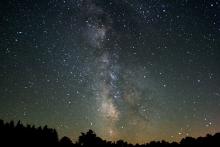Feed aggregator
Martian dust could pose health risks to future astronauts
Inhaling dust particles from the Red Planet over long periods of time could put humans at risk of developing respiratory issues, thyroid disease and other health problems.
Organic molecules of unprecedented size discovered on Mars
The longest organic molecules identified to date on Mars have recently been detected. These long carbon chains, containing up to 12 consecutive carbon atoms, could exhibit features similar to the fatty acids produced on Earth by biological activity. The lack of geological activity and the cold, arid climate on Mars have helped preserve this invaluable organic matter in a clay-rich sample for the past 3.7 billion years. It therefore dates from the period during which life first emerged on Earth.
Oxygen discovered in most distant known galaxy
Astronomers have detected oxygen in the most distant known galaxy, JADES-GS-z14-0. This record-breaking detection is making astronomers rethink how quickly galaxies formed in the early Universe.
Treasure trove of galaxies, glimpses of deep fields
On 19 March 2025, the European Space Agency's Euclid mission releases its first batch of survey data, including a preview of its deep fields. Here, hundreds of thousands of galaxies in different shapes and sizes take center stage and show a glimpse of their large-scale organization in the cosmic web.
Meteorites: A geologic map of the asteroid belt
Where do meteorites of different type come from? In a review paper, astronomers trace the impact orbit of observed meteorite falls to several previously unidentified source regions in the asteroid belt.
Combination of cosmic processes shapes the size and location of sub-Neptunes
A combination of cosmic processes shapes the formation of one of the most common types of planets outside of our solar system, according to a new study.















